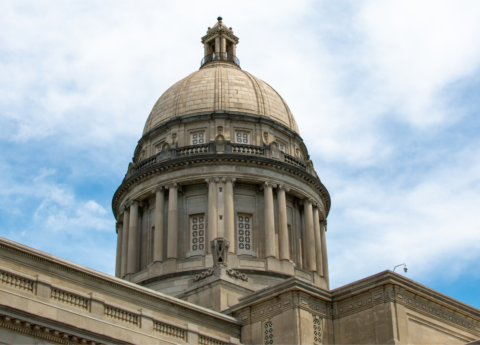For a person who is chronically ill, a day of less pain provides welcome comfort but no promise of returning to long-term health. Kentucky finds itself in a similar position when it comes to the new two-year state budget the legislature is considering.
Soon, the House of Representatives will pass its version of the budget. And while the spending plan they’re likely to approve provides some short-term relief in certain areas from years of painful cuts in state services, the “patient” will not recover until our tax system is reformed. Only then will we have more of the resources we need to invest in a healthy future for Kentucky.
The House’s budget is expected to be similar to what the governor proposed back in January, a budget that included some modest good news.
That budget provides the first injection of additional support for public schools in six years. It rolls back cuts that gave Kentucky the most restrictive eligibility in the country for child care assistance. It includes an array of capital projects ranging from broadband technology to university classrooms. And it provides the first state employee raises in four years.
But the budget funds those areas in part by borrowing from Kentucky’s future. For what will be eight consecutive years, the budget will fail to contribute the extra money needed in the teachers’ retirement system, making the debt owed even harder to pay down the line. Higher tuition and fees are likely to result from this budget, meaning greater debt for college students. And Kentucky’s lack of sustainable revenue will make it challenging to pay back money borrowed for new capital projects without squeezing other needs.
The plan scrapes the bottom of the barrel to come up with what new money it does find. It takes funds intended for employee health insurance, underground storage tank cleanup, land conservation, professional licensing boards and more to balance the budget.
And in many important areas, this budget offers still more cuts. Higher education funding is reduced yet again, meaning a cumulative 27 percent cut since 2008 after adjusting for inflation, at the same time the budget continues to deny need-based financial aid to two-thirds of eligible students. Some areas of the budget are cut an additional 5 percent more, including adult education and environmental protection.
Even the areas receiving additional dollars aren’t close to pre-recession funding levels. While SEEK—the main funding formula for K-12 schools—gets added money in the budget, it’s just enough to keep pace with inflation over the next two years. That leaves in place cuts which have reduced per pupil funding by 10 percent (after adjusting for inflation) since 2008.
What makes additional cuts and continued underfunding unwise is that there’s a whole other state budget that we’ve been ignoring—the amount of money the state spends each year through various tax breaks known as tax expenditures. Their total cost is around $15 billion compared to a General Fund budget of just $10 billion. Eliminating less than 5 percent of tax expenditures would raise enough money to repair holes in the budget and make progress in Kentucky.
Years of cuts are harming the foundation of our economy. The state’s approach since 2008 has focused too heavily on cutting areas that make our state smarter, healthier and safer, while failing to address the tax break spending that many people don’t even know exists and is subject to little scrutiny. The budget challenges will just get harder over the next decade as additional bills come due and the tax system’s ability to generate the resources Kentucky needs continues to deteriorate.
To be sure, the budget now being considered would provide some much-needed relief in certain areas. But it’s a long way from what Kentucky needs and deserves. Lasting fiscal health is only possible once legislators embrace the need for state tax reform. There’s still time to do so this legislative session.



